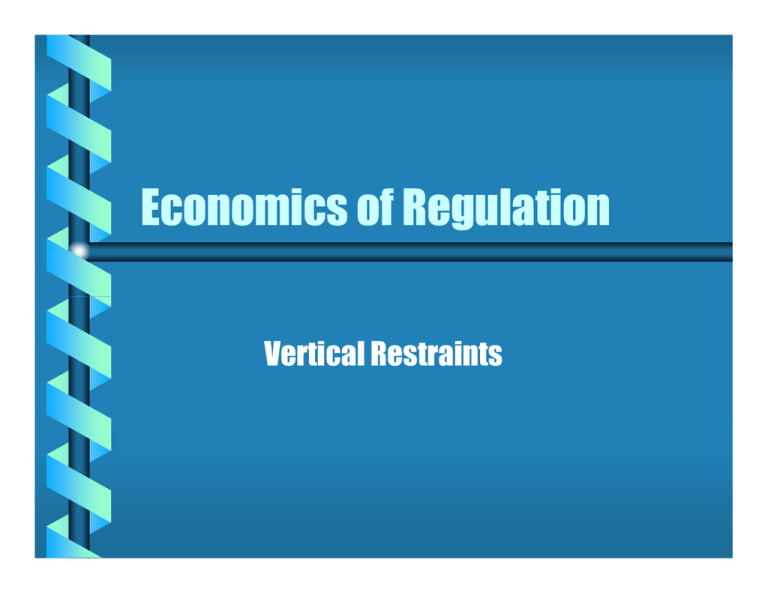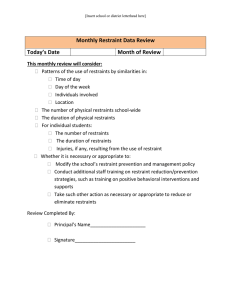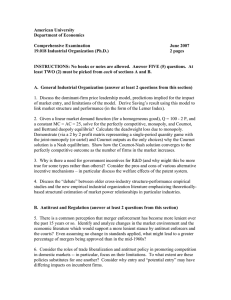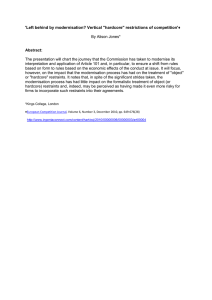Economics of Regulation Vertical Restraints
advertisement

Economics of Regulation Vertical Restraints TieTie-In Sale Definition Sale of good X is conditional on the buyer’s promise to buy good Y. (IBM’s selling punch cards with computers). TieTie-In Sale A. Antitrust Objections • 1. Can be used to exclude or foreclose small sellers from a particular market. (Cable company requiring wiring done by them.) • 2. Monopolist is able to extent its power into another market. (Kodak selling film wit processing FREE.) [continue……] TieTie-In Sale • 3. Creates barriers to entry, since entrant would have to sell both products. • 4. Aids cartel discipline. One way to cheat is to discount a related product. If products are bundled, this option is not available. • 5. Aids price discrimination by “metering”. (IBM with punch cards; XEROX with paper and toner.) TieTie-In Sale B. Legal Treatment • 1. Section 1 prohibits it but is not explicit. • 2. Section 3 of Clayton Act...”It shall be unlawful ... to lease or sell goods...on the condition, agreement or understanding that the lessee or purchaser thereof shall not use or deal in the goods...of a competitor or competitors of the lessor or seller, where the effect...may be to substantially lessen competition or tend to create a monopoly in any line of commerce. • 3. Tie-ins are almost illegal per se Exclusive Dealing - firm X sells to Y on the condition that it accepts no goods from X’s competitors. A. Antitrust Objections • 1. Market foreclosure • 2. Inhibit entry B. Legal Treatment • 1. Rule of Reason - same Section 3 of Clayton Act Vertical Restraints A. Resale Price Maintenance - producer specifies the prices that wholesalers or retailers may charge when reselling the producer’s product. B. Exclusive Territory - wholesaler or retailer is granted a certain geographic region where only s/he can resell. Vertical Restraints C. Anti-efficiency motives - cartel of retailers or manufacturers D. Pro-efficiency motives - expert sales staff - don’t want people going across the street after salesperson at another store spent 3 hours helping a person decide which model to buy. Baldwin article Structure, Conduct, Performance are not three independent measures. We all recognize that structure can lead to some conduct problems, but Baldwin argues that there is a feedback effects such that certain conduct can lead to certain structure, i.e. tie-in sales may need monopoly power but the conduct itself will lead to more monopolization in structure.











